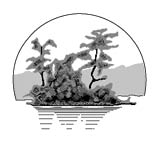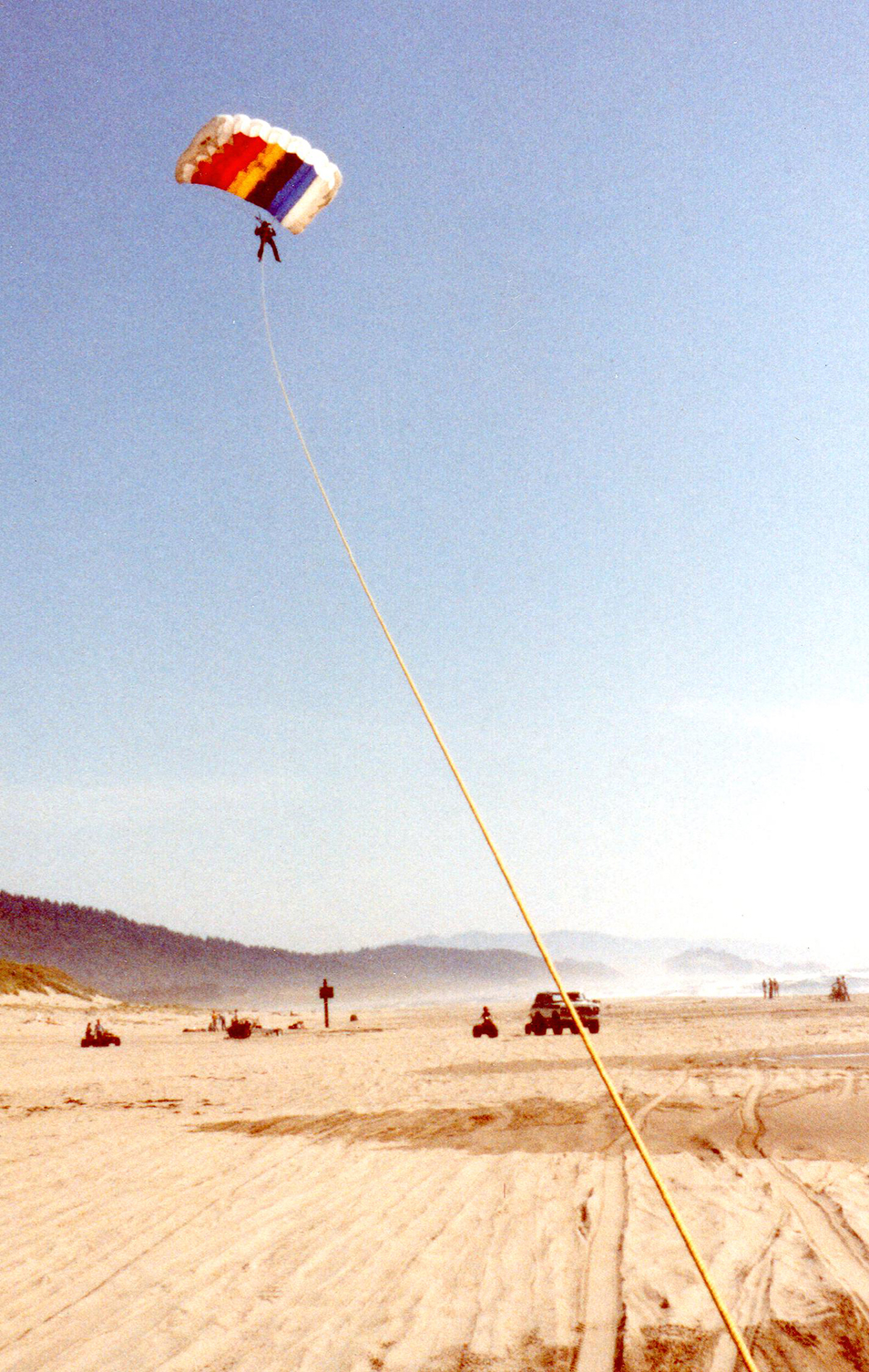
parasailing experiments
 December 10th, 2013
December 10th, 2013 Robert Crimmins
Robert Crimmins Adventure / Interests / Jobs, Things I Shouldn't Have Done
Adventure / Interests / Jobs, Things I Shouldn't Have Done 0 Comments
0 Comments
A First In Parasailing
In 1975, when I started skydiving, there were no parafoils, or ram-air parachutes on the drop zone. By the summer of 1976 they were pretty common although they still weren’t what most people were jumping. By 1977 parafoils had become pretty common and by then I owned one of the originals, a five cell canopy called the “Strato Star” made by Para Flite Industries of New Jersey. In 1978 I bought one of the first Jalbert, “252” Parafoils, which was made by North American Aerodynamics of North Carolina.Round, military surplus parachutes were what we jumped when I started and most of my first hundred jumps were on “T10s” and 28’ canopies that all the clubs and drop zones had in abundance. I also jumped a Russian PC, or para commander. It was a round parachute and was perhaps the best sport parachute of the day.
The 252 was amazing. For the day, it was fast and by current standards it is stable, utterly reliable, it opens gently, and is easy to land, unlike the Strato Star which under some conditions wasn’t. I refer to the 252 in the present tense because it is still produced and used in accuracy competition at the highest levels.
The idea of using it for para sailing came to me shortly after I started jumping it so on a sunny, brisk and breezy day in the fall of 1978 three friends and I went to Cecil County Airport in Elkton, Maryland with a truck and a two hundred foot rope to gave it a try. The friends were Norris Smith, another jumper, Gabriel Fieni, who wasn’t and Ron Snyder, who also had never flown a parachute.
The only concern I had was that the parachute would behave differently when tethered than it did during a normal descent but I knew that Domina Jalbert made parafoil kites and they worked so towing one should be all right.
I tried it first with Norris driving the truck and then Norris did it, followed by the two non-jumpers, Ron and Gabe. The driver of the truck could control the landing by adjusting the speed as the “jumper” landed and since the wind was blowing pretty hard, ten to twenty miles per hour, the landings were very light and at a walking speed. There were no problems and we had a lot of fun, driving down the runway into the wind until we reached the end and then returning to the threshold to do it again for hours, not stopping until the airport manager arrived and told us to get the hell off his airport and what if someone wanted to land, etc.
We did it again in 1983 on a beach in Oregon. In that state the ocean beaches are a state highway. I think that may have historical roots because its very hard to travel in the rain forest that covers the Coastal Mountains. For the Indians and pioneers that lived in Oregon before the roads were built the beach was the best way go north or south. That year my wife’s little sister, Marie, spent the summer with us so she was one of those who enjoyed the view of the ocean, beach and dunes from two hundred feet at the end of a rope. When her father, my father-in-law, saw the picture of his teenage daughter’s adventure he was a little angry but he has since forgiven me.
In the years since I haven’t heard of others doing what we did. There weren’t very many 252s in use in 1978 and no one may have used them for para sailing before me. I still have it and it isn’t the rig that I jump with anymore, although I would, and I may para sail with it someday again.
We did it again in 1983 on a beach in Oregon. In that state the ocean beaches are a state highway. I think that may have historical roots because its very hard to travel in the rain forest that covers the Coastal Mountains. For the Indians and pioneers that lived in Oregon before the roads were built the beach was the best way go north or south. That year my wife’s little sister, Marie, spent the summer with us so she was one of those who enjoyed the view of the ocean, beach and dunes from two hundred feet at the end of a rope. When her father, my father-in-law, saw the picture of his teenage daughter’s adventure he was a little angry but he has since forgiven me.
In the years since I haven’t heard of others doing what we did. There weren’t very many 252s in use in 1978 and no one may have used them for para sailing before me. I still have it and it isn’t the rig that I jump with anymore, although I would, and I may para sail with it someday again.




0 comments
Leave a comment